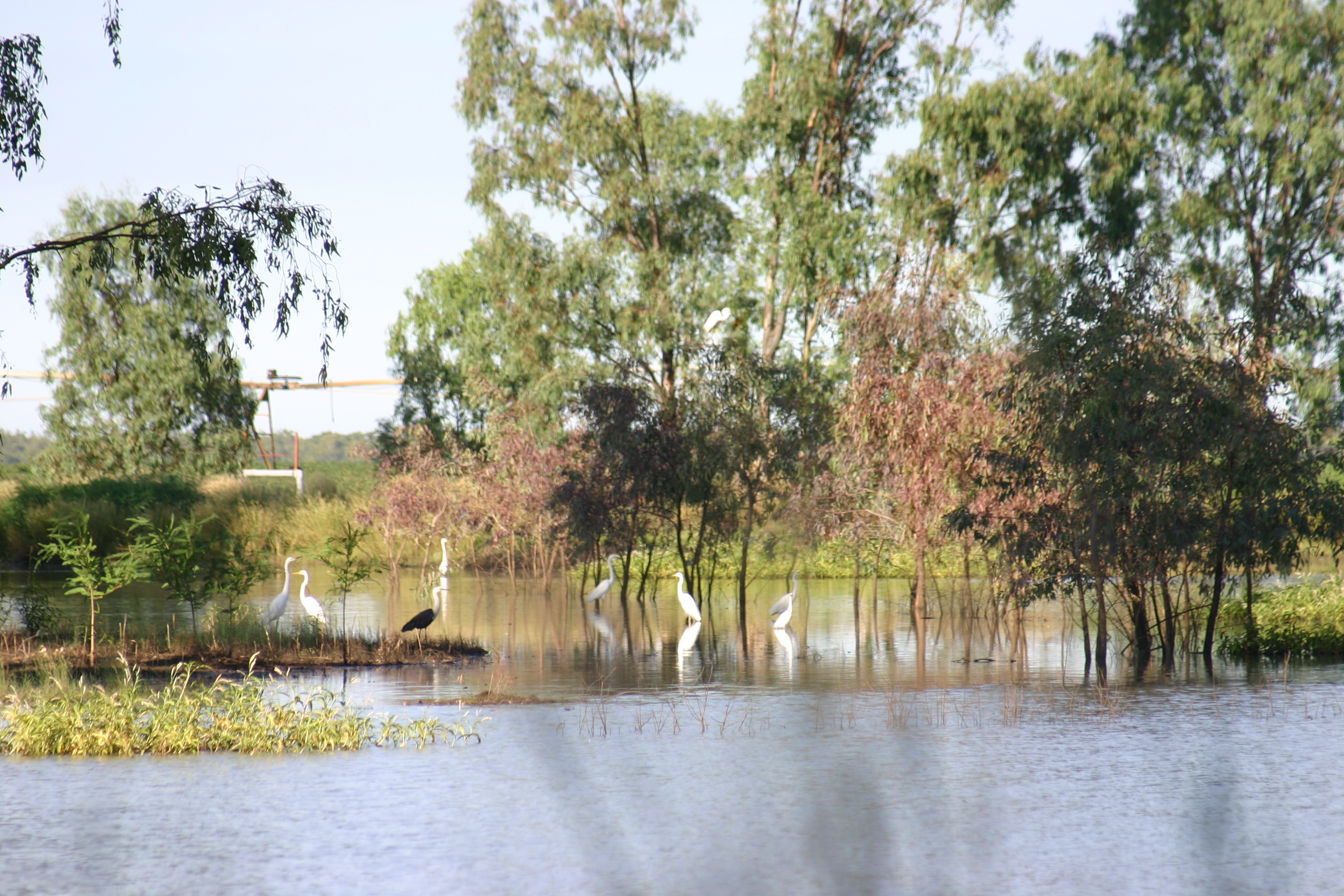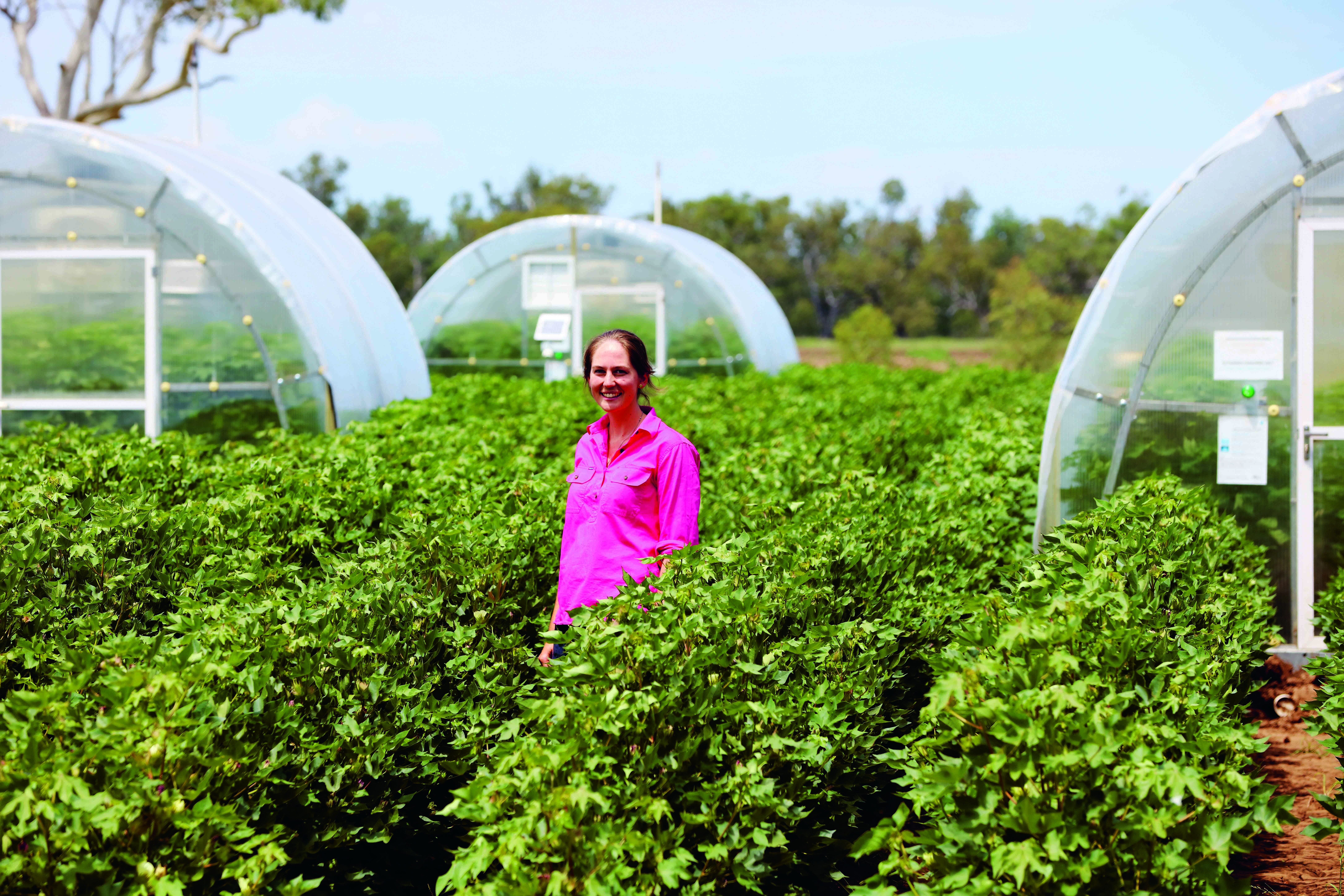Environment and climate
- Australian cotton farms are home to hundreds of species of plants and animals.
- Growers implement practices to boost drought and climate variability resistance.
- Broader work is underway within industry to tackle climate change.
Protecting natural resources and growing crops to clothe the world is a balancing act that cotton growers manage every day. Soil, water, plants, animals and air are all part of what makes a dynamic and healthy cotton farming system.
As custodians of large blocks of land, cotton growers play a role in managing Australia’s natural resources and environment. For example, cotton growers boost their water use efficiency, improve soil health, fence off remnant vegetation, practice no-till farming and Integrated Pest Management, and strive to become more efficient across the farming operation. All this is done with a combination of cutting-edge science and technology, extensive experience, and significant investments of time and money.
Industry research shows that natural areas on cotton farms, such as native vegetation and riparian zones, range between 10 - 40% of property area, and is dominated by riparian lands.
In 2019, 50% of growers had actively encouraged natural regeneration in the past year and 70% undertook weed control of natural areas.
More than 55 species of waterbirds have been recorded on farm water storages within the Namoi & Gwydir valleys in NSW. A total of 153 bird species have been found in natural vegetation in the Namoi Valley, and 450 species of invertebrates were recorded in one cotton field during the summer.
As a product, cotton is a renewable resource that is 100% natural. Unlike synthetics, cotton is biodegradable. It breaks down quickly in terrestrial and aquatic environments, and does not contribute to the microplastic pollution problem. Because cotton is breathable and does not retain odours as synthetic fabrics do, cotton requires fewer washes between wears, saving time, money, water and energy, and helps clothes and homewares last longer.

Climate
Cotton growers, like other farmers, depend on the natural environment and the weather to produce their crop.
Cotton is a perennial plant grown commercially as an annual summer crop in regions that experience climate variability. This variability is driven by El Nino/La Nina cycles that make seasonal weather patterns more unpredictable and disrupt the crop’s growing period.
The Australian cotton industry has a strong history of adaptation and change to make the most of new opportunities, and Australian growers have already developed highly efficient and flexible farming systems in order to manage their crop in variable climates.

Growers tackling climate change
Growers continue to implement practices that develop landscapes that are more resilient to the impacts of drought and climate variability. They also work to reduce greenhouse gas emissions and improve the land’s ability to store carbon through practices and innovations including:
- Maximising the efficiency of major inputs used in cotton growing, such as energy and nitrogen, by optimising irrigation pump performance and using fuel-efficient farm machinery.
- Using alternate sources of nitrogen, for example, the use of legume rotation crops that fix nitrogen in the soil.
- Improving soil health through other practices, including using controlled traffic and minimum-tillage systems.
- Minimising spraying machinery operations, and therefore fuel use, through industry-wide use of herbicide-tolerant cotton, and during harvest through the use of machinery that replaces multiple machines with one.
- Using renewable and alternative energy sources and fuels, such as solar panels, to power irrigation pumps and biofuels.
- Conserving and managing areas of farm biodiversity such as native vegetation and riparian areas on farm, which are valuable carbon stores.
- By continuing to build knowledge of climate change and having access to improved weather forecasting and the extension of weather forecasting tools and advice, growers can take actions that reduce the impacts and adapt to the changing climate/seasons.

Broader industry efforts tackling climate change
Water and weather are the primary challenges to improving and sustaining cotton farm profitability, meaning the industry is taking the climate change issue seriously.
The Australian cotton industry’s work on climate change has included:
- Continued investment in water use efficiency research.
- Continued investment in improving nitrogen use efficiency.
- The establishment of the Climate Change facility at the Australian Cotton Research Institute and support of investigations by Dr Katie Broughton (pictured above (photo by Melanie Jenson)). The facility is also studying the effects of higher CO2 levels and warmer temperatures on cotton growing, and exploring how best to develop new cotton varieties that have adapted to hotter, drier conditions.
- Support for investigations into alternative energy sources (including bio-diesel from cotton seed, solar-powered irrigation pumps, and ethanol from gin trash).
- Support for climate research, improved weather forecasting, and the extension of weather forecasting tools and advice to growers.
- Carrying out a life cycle assessment of an Australian cotton T-shirt, which found the major environmental impact to be in the ‘use’ component of the garment (wearing then washing), rather than production and manufacturing.
- Up-to-date knowledge on climate issues delivered to growers through the industry’s extension network, CottonInfo, and the myBMP environmental management program (which includes components on energy and input efficiency, natural resources and soil health).
Australian Cotton Sustainability Framework website
The Australian Cotton Sustainability Framework website is a one-stop-shop for information on the sustainability performance of the Australian Cotton Industry. From reports and factsheets to information on priority topics and downloadable data on our performance. Visit australiancottonsustainability.org.au

